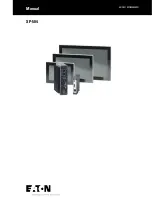
- 15 -
NCC-1 Front Panel Controls and Switches
POWER:
Turns power off and on. When powered-off,
INPUT
B
is disconnected and
INPUT
A
is connected directly to the receiver, removing antenna power.
Two
Attenuator
switches reduce gain in ten dB steps. The steps are 0, -10, -20, and –30 dB.
The left switch
sets
INPUT
“
A
” attenuation (primary antenna), the right switch
sets
INPUT
“
B
” (secondary antenna) attenuation.
BALANCE:
Provides fine adjustment of gain. It is used to balance or equalize signal levels
from
INPUT
A
and
B
. The
BALANCE
control provides anywhere from zero to 12 dB
attenuation on either
A
or
B.
This control has the same “feel” and operation as the balance
controls on conventional stereo systems.
Maximum gain on both channels occurs when the
BALANCE
control is positioned in the center of the range, and gain is reduced as the knob is
rotated away from a particular channel. If you rotate the
BALANCE
control clockwise, the
gain of
INPUT
A
is reduced. Without precise signal or noise level balancing between
antennas, noise nulling or canceling will not be deep.
PHASE:
Changes the phase delay relationship between
INPUT
A
and
B
. The resulting phase
shift will change the position of nulls or directions of peak signal response.
INPUTS:
Reverses
A
(primary) and
B
(secondary) antenna inputs. This is done after
attenuation adjustment. Changing this switch is the electrical equivalent of physically
swapping antenna element locations.
BAND:
Optimizes phase range and selects the filter boards used. "
L
" is for frequencies below
10 MHz, and selects optional filters FL1 & FL3. "
H
" is for frequencies above 5 MHz and
selects optional filters FL2 & FL4.
B PHASE:
Moves
B INPUT
phase by exactly 180 degrees.
NORM
is 180 Degrees or no phase reverse,
REV
is 0 Degrees.














































